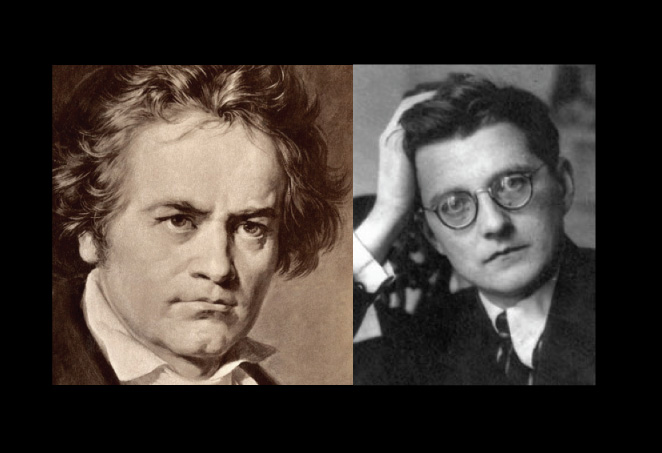Boston Artists Ensemble captures the eerie essence of Beethoven and Shostakovich
Besides the return of daylight savings time, nothing quite lights up a Sunday afternoon chamber music program like the pairing of Ludwig van Beethoven and Dmitri Shostakovich. Yesterday, the Boston Artists Ensemble clearly thought as much, presenting the former’s D-major “Ghost” Trio (Op. 70, no. 1) alongside the latter’s G-minor Piano Quintet in a performance at St. Paul’s Church in Brookline.
Beethoven’s Trio, written in 1808, received its subtitle from the composer’s former student, Carl Czerny, who asserted that its slow movement depicted the appearance of the shade of Hamlet’s father in the eponymous play. Whether one accepts that story or not, the music is full of haunting sonorities and furious, sudden contrasts of dynamics and textures.
Sunday’s reading captured much of its eeriness. Balances between pianist Randall Hodgkinson, violinist Sharan Leventhal, and cellist Jonathan Miller were smartly calibrated. The music’s delicate, quiet sections spoke with engrossing inward focus. And its stark shifts of mood and tone came out with bracing vigor.
Bold fluctuations of texture and sonority also ruled in the fast outer movements. String playing in the first was wonderfully blended and beautifully dovetailed, especially during the transition between the Allegro’s two principal thematic ideas. Though the keyboard tended to dominate the ensemble, Hodgkinson never drowned out his colleagues.
In the finale, fresh, spirited phrasings and jolly dialogues between all three instruments were enough to overcome moments of spotty intonation and ensemble from the strings. Here, Hodgkinson’s pianism, at once muscular, nimble, and colorful, proved the anchor and brilliantly carried the day.
The “Ghost” Trio’s structure (two lighter movements framing a darkly introspective one) is almost perfectly inverted in Shostakovich’s Quintet. This 1940 score, with its embrace of archaic forms and neo-Baroque figurations, offers a rich mix of irony, lyricism, and searing expressivity. On Sunday, these characteristics were, on the whole, powerfully realized.
The Prelude, with its fervent keyboard refrain and stratospheric violin solos (played with magnificent security by Ayano Ninomiya), unfolded with soulful intensity. In the Fugue, BAE’s performance was both well-shaped and warmly conversational: rarely does this strict musical form sound so humane and immediate.
While the impish Scherzo was densely forceful, the Intermezzo unfurled with breathtaking songfulness. At the center of its action was Stephanie Fong’s bronzed, beautiful illumination of the viola part and Hodgkinson’s masterful attentiveness to voicings in the piano writing.
After this, the finale felt as, if not exactly a let-down, then something of an anticlimax. True, it didn’t want for architectural fluency or dancing energy. The movement’s apexes were jaunty and swaggering and the BAE players unwound from those big moments with enchanting naturalness. But such was the fineness of Sunday’s Intermezzo that—like the “Ghost’s” slow movement—it inhabited a world unto itself.
Between the “Ghost” and the Quintet, BAE offered a “mystery piece.” This turned out to be more Beethoven: the Allegretto WoO 39 (an announcement came after intermission). As in the “Ghost,” the gracefulness and sheer charm of the ensemble’s performance compensated for periodic intonation issues.
The Boston Artists Ensemble plays music by Schubert at 8 p.m. April 21 at Hamilton Hall. BostonArtistsEnsemble.org
Posted in Performances
